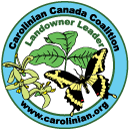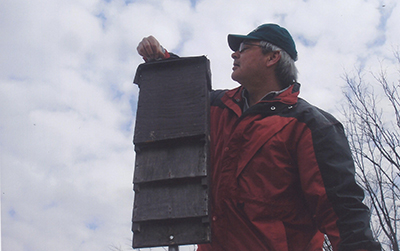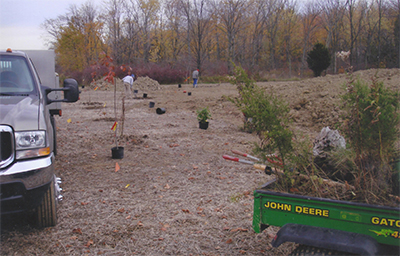
Landowner Leaders Profile



Larry Drew owns 50 acres of farmland in Chatham-Kent that includes a 6 acre block planting of trees established by his father in the 1960’s. The trees were transplanted by hand from neighbouring woodlots when it was retired from pasture. The site is poorly drained and remains wet well into early summer. At the edge of the wettest area stands a hollow old Shumard Oak with an estimated age of well over 200 years - probably left by early settlers due to its size and lack of timber value. Being its northern range limit, the Shumard Oak was never common in Ontario and, due to forest clearance and wetland drainage, is now a “species of concern”. Larry takes pride in the fact that this “retired” site, with vernal pools and swamps, continues to allow the ancient tree to set down new seed and regenerate.
Larry’s property is in the zone where the Canadian Food Inspection Agency (CFIA) embarked on a plan to control and stop the spread of the Emerald Ash Borer and consequently all ash trees were removed from the property in 2005. Larry looked at the dollar compensation offered by the federal government as an opportunity to advance his concept of further extending and re-naturalizing his project. He invited several experts to visit the site to provide him with advice, including Don Hector (retired) from Stewardship Kent, Randall Van Wagner, with the Lower Thames Valley Conservation Authority (LTVCA), and Daryl Randall of Ducks Unlimited Canada (DUC). They provided him with invaluable recommendations on what seemed at first to be simply a ‘tree planting’ and ‘pond’ project, but instead turned into a re-naturalization project focused on maximizing biodiversity of habitat for native species – including species at risk.
In 2007, Larry retired an additional 3 acres of farmland adjacent to the existing forested areas. With advice on design from DUC, and funding from Stewardship Kent and the National Wild Turkey Federation 1 one acre wetland was created with “natural” shape and features, and broad and deep enough to maintain open water for ducks and waterfowl. During the excavation mounds and berms were built and a few smaller `frog ponds` or vernal pools were dug nearby. This provided seasonal and year-round wetland habitats as well as areas of varying drainage. A seed mix of native grasses and flowers, tolerant to wetter areas, was broadcast around the area, creating a diverse habitat for pollinators and other species.
Larry was able to further leverage his CFIA compensation for additional funding through the Trees Ontario Foundation. After surveying what native species were already present on the property, Larry opted for additional biodiversity and planted 31 additional species of native trees (including Swamp White Oak, Pin Oak, Sycamore, Kentucky Coffee Tree, and Shellbark Hickory) and 12 species of native shrubs (including Button Bush, Winterberry, Ninebark, and Red Elder). Larry was thrilled to have 30 students from the Chatham-Kent Secondary School’s Environmental Program help with tree planting activities, and a team of MNR’s Stewardship Rangers install bird boxes, lay down salamander boards near the vernal pools, and built and install nesting and egg-laying structures for threatened species of bees and pollinator species.
Even Larry’s children, Emily and Darren, got involved by helping to build predator safe nesting structures along the natural features of the property, as well as creating a stone pile beside the pond in hopes of attracting Eastern Foxsnake, a species at risk that had previously been observed on the property. Larry proudly contends that the wonderful learning experience that naturalizing 3 acres of former soybean field has had on his children is “absolutely PRICELESS!”
